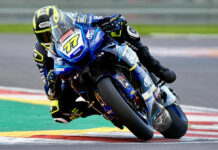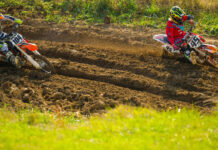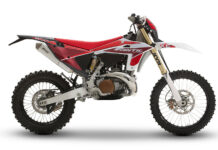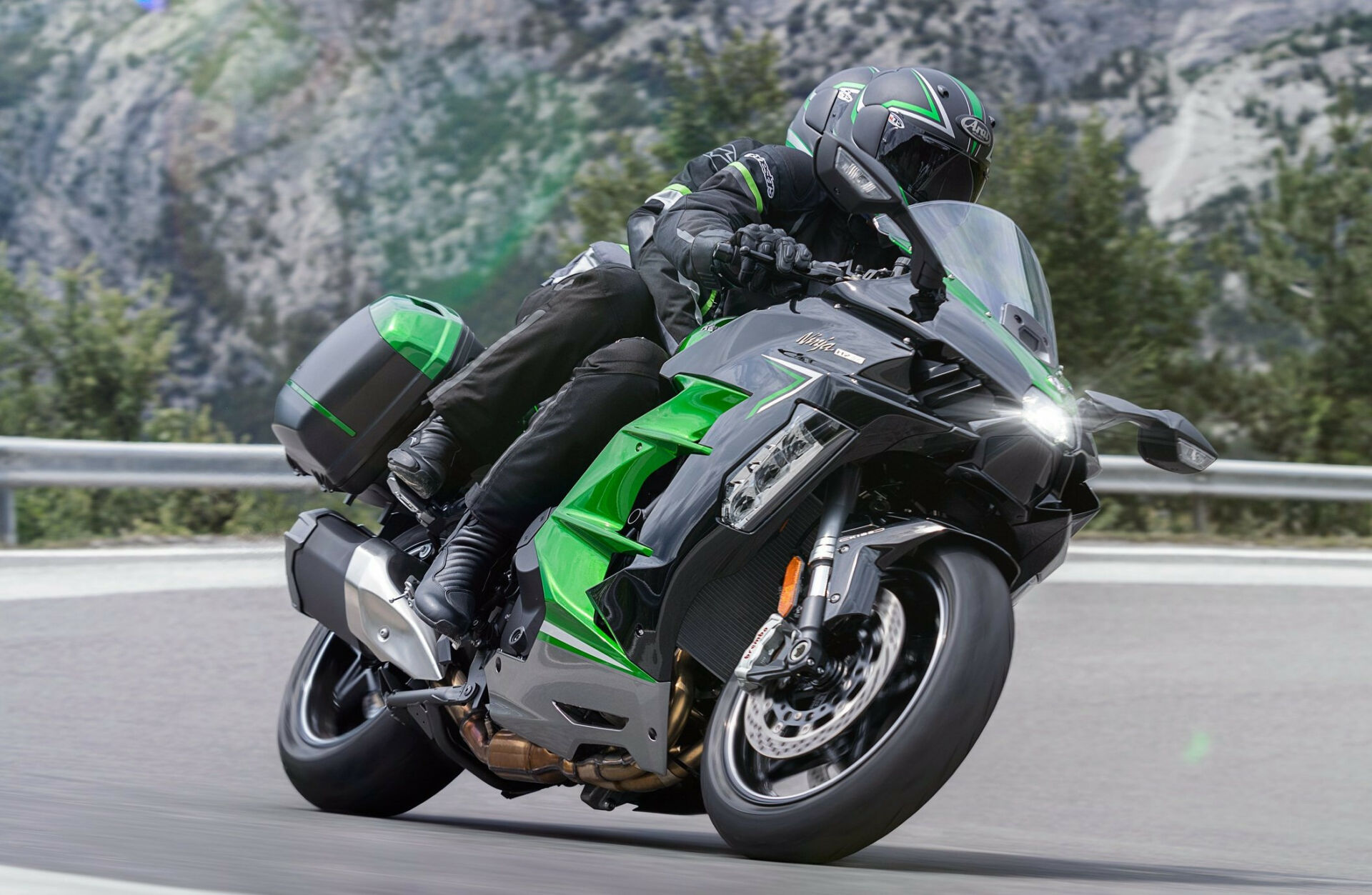2023 KAWASAKI NINJA H2® SX SE MOTORCYCLE
ENGINEERED TO BE FREE
Kawasaki Ninja H2® models are a testament to Kawasaki’s pursuit of innovation, performance, and passion for creating the world’s most advanced line of supercharged motorcycles. For 2023, the Ninja H2® SX SE motorcycle returns to Kawasaki’s hypersport lineup, blending performance and ultimate real-world handling with Kawasaki’s most advanced suite of rider assist technologies to date.
The Kawasaki Ninja H2 SX SE brings the latest in electronically controlled suspension, braking, and rider aid technologies to the supercharged hyperbike platform, making it the ultimate sport touring package. New for 2023 is the addition of Auto Hi-Beam (AHB), which automatically turns the high beam lights on and off as necessary depending on brightness ahead. The Ninja H2 SX SE is powered by an exhilarating, balanced supercharged 998cc inline four-cylinder engine, which utilizes Kawasaki’s knowledge of precision engine tuning to distribute power to where it is most useful, in the low to mid-range for both long distance touring and daily riding. With this powerful engine at its core, Kawasaki has created one of the most advanced and well-balanced motorcycles in performance, comfort, and efficiency, to expand your supercharged journey.
Developed with the ability to go above and beyond the daily applications of today’s sportbike rider, the Ninja H2 SX SE is Kawasaki’s most advanced sport tourer ever and utilizes a balanced supercharged engine that offers optimal output performance in the low to mid RPM range, all while achieving excellent fuel efficiency. This highly refined package offers an unrivaled level of performance and comfort, with agile handling akin to its superbike counterparts.
2023 KAWASAKI NINJA H2® SX SE HIGHLIGHTS
- NEW Auto Hi-Beam (AHS)
- 998cc inline four-cylinder balanced supercharged engine
- 5” TFT color instrumentation with SPIN
- Advanced Rider Assist System (ARAS)
- Adaptive Cruise Control (ACC)
- Forward Collision Warning (FCW)
- Blind Spot Detection (BSD)
- Tire Pressure Monitoring System (TPMS)
- Vehicle Hold Assist (VHA)
- Kawasaki Electronically Controlled Suspension (KECS)
- Kawasaki Intelligent Proximity Activation Start System (KIPASS)
AUTO HI-BEAM (AHS)
New for 2023, the Ninja H2® SX SE now has an AHB feature that utilizes a camera sensor to assess brightness of the lights of vehicles ahead, streetlights, and more. AHB automatically turns the bike’s high beams on or off as necessary based on brightness. For this feature to function, the dimmer/passing switch must be set to high beam, the bike must be traveling above 12.4mph, and it must be dark. Once the system has been engaged, the icon will be displayed in green on the instrument screen.
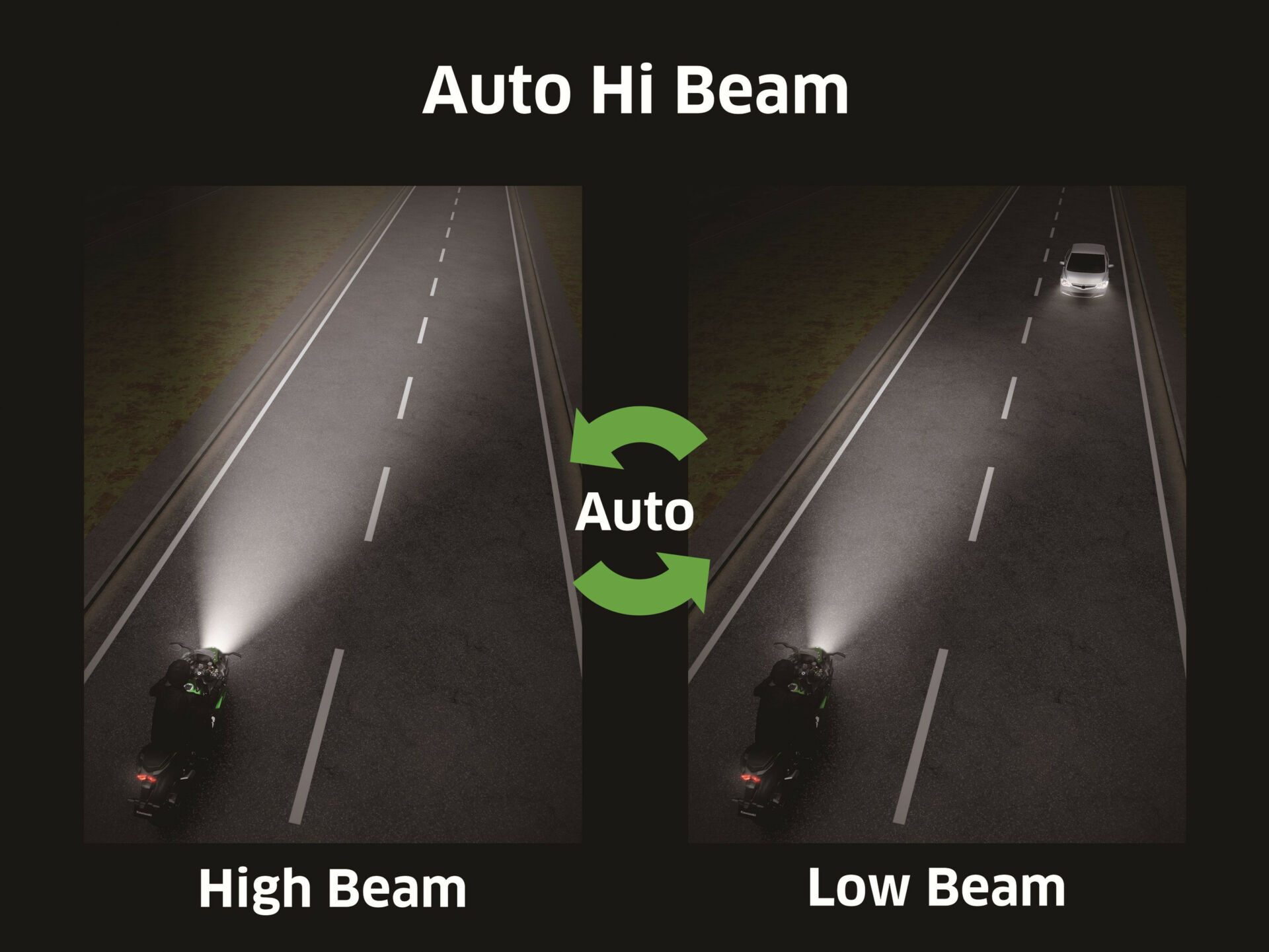
ENGINE & CLUTCH
A balanced supercharged 998cc inline four-cylinder engine is designed to deliver both power and fuel efficiency on the 2023 Ninja H2® SX SE, focusing on low-mid range power delivery with exhilarating acceleration that prioritizes everyday usability in street-riding conditions. Cam timing contributes to the overall engine performance, while the resin silencer added to the secondary air inlet reduces mechanical (intake) noise and the straight-pipe style layout delivers excellent torque to benefit everyday ride ability.
A dog-ring transmission complements the powerful engine and facilitates smooth, quick shifting. A hydraulic assist and slipper clutch offers light lever operation and the volume of the hydraulic fluid routed to the clutch plates delivers a smooth clutch release. As a result, the shift load due to the plates dragging can be minimized, which is noticeable when stopped, and it’s easier to shift into neutral.
TFT COLOR INSTRUMENTATION WITH SMARTPHONE INTEGRATION (SPIN)
A large, easy-to-read 6.5” full-color TFT instrumentation screen adds a high-tech appearance to the cockpit. The TFT instrumentation is complemented by multiple display modes (black, white or automatic) and smartphone connectivity as well as compatibility with Kawasaki Smartphone Integration (SPIN) to offer riders a wide range of information. The home screen display is divided into three areas, upper, middle, and lower. Display functions in the upper area include integrated riding mode, gear position indicator, distance setting indicator, ACC indicator, tachometer, Kawasaki Quick Shift (KQS) indicator, Kawasaki Engine Brake Control (KEBC) indicator, and a multifunction gauge that visually shows the boost pressure plus the rider’s choice of throttle application, front brake pressure or G-force. The middle area display functions include a large digital speedometer, cornering light indicator, service indicator, Vehicle Hold Assist (VHA) indicator, and economical riding indicator. In the lower area, a multifunction display allows riders to scroll through functions such as odometer, dual trip meters, bank angle display and bank angle recording function, tire pressure, boost pressure, boost temperature, current and average fuel consumption, remaining range, average speed, total time, and battery voltage. Additional display functions that can also be accessed include fuel gauge, Kawasaki Electronically Controlled Suspension (KECS) preload mode, outside temperature, ice warning, connected device indicator, and clock and coolant temperature.
Kawasaki’s smartphone-based infotainment app (SPIN) enables various third party applications to be downloaded and mirrored on the cockpits TFT display. Basic functions available in the app include telephone, map display, music, calendar, and contacts. Additionally, riders can opt to download third party apps to add to their Kawasaki SPIN library to be able to interact with them on the TFT display. Available apps include Sygic (navigation), SENA (headset communication), and more.
Using Kawasaki SPIN provides riders access to several great functions, including:
- Vehicle Info: information such as fuel gauge, odometer, maintenance schedule, which can all be viewed via the smartphone
- Riding Log: GPS route information as well as vehicle running information can be logged and viewed via the smartphone
- Telephone Notices: when a call or mail is received by the smartphone, this is indicated on the instrument display
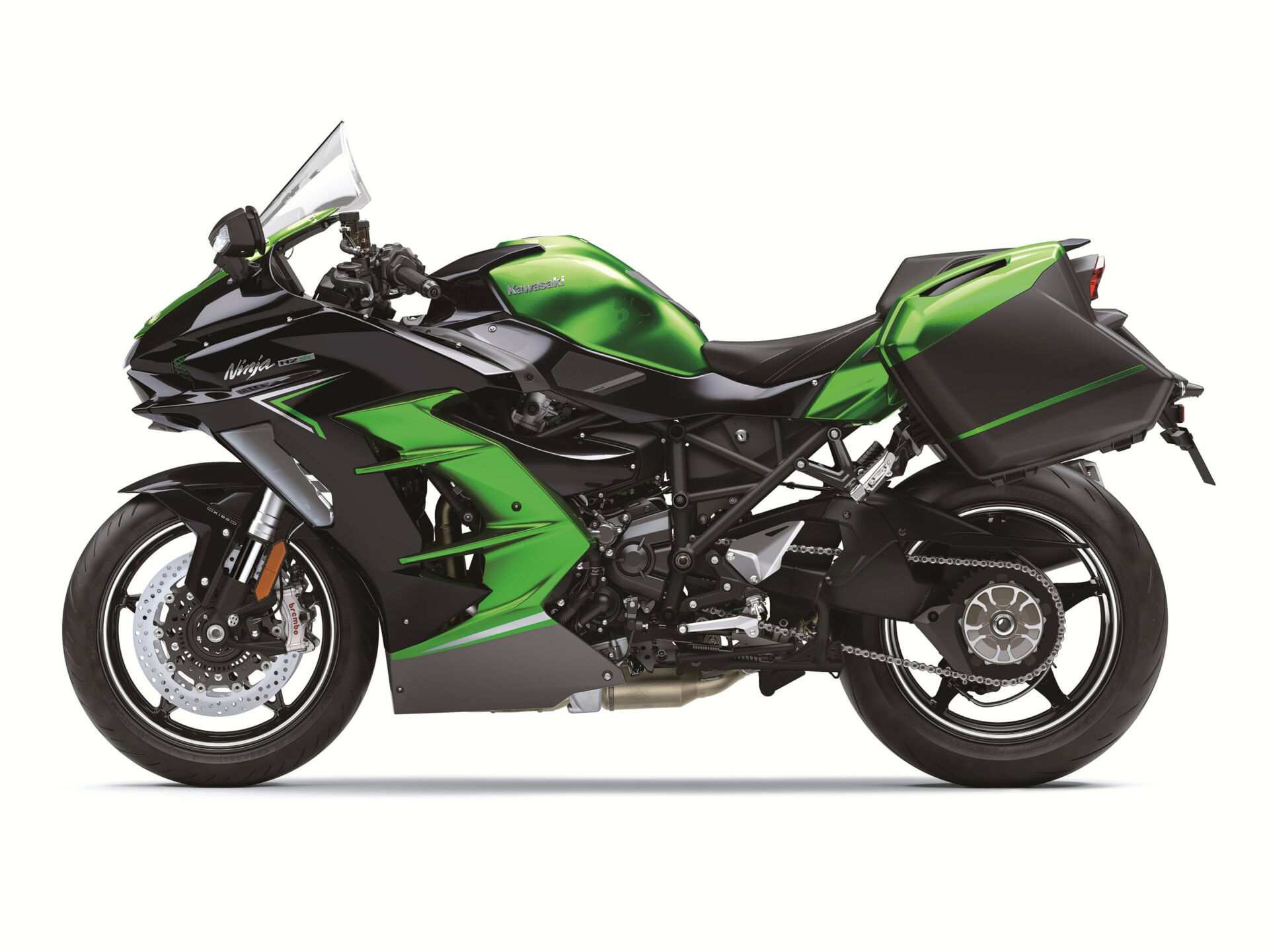
ADVANCED RIDER ASSIST SYSTEM (ARAS)
The Ninja H2® SX SE motorcycle continues to boast the latest cutting-edge technology, which includes the Advanced Rider Assist System (ARAS) that features surround-sensing functions based on radar sensors that generates a more relaxed riding experience. Oftentimes, riding in heavy traffic and maintaining the correct distance to the vehicle in front takes a great deal of concentration and can become strenuous over longer periods. Adaptive Cruise Control (ACC) maintains the speed set by the rider but adjusts the vehicle speed to maintain a suitable following distance from the vehicle in front. When the system is operating, a signal is shown on the instrument panel, including the symbol showing green when following a vehicle ahead and grey when there is no vehicle ahead. Once operational speed gets to a certain point, which varies in each gear, the system will disengage, and the rider will need to operate the brakes manually. Pressing the cruise control button on the left side of the handlebar turns the system off. Operating the brakes or engaging the clutch for several seconds causes ACC to be temporarily disengaged and closing the throttle completely will also disengage the system. Accelerating (throttle override) or shifting gears (as long as the new gear’s minimum operation speed is met) does not disengage the system unless the maximum speed allowed is reached.
Bosch’s development of Forward Collision Warning (FCW) was designed to reduce the risk of a rear-end collision or to mitigate its consequences through front-facing radar sensor monitors. The system is active as soon as the vehicle starts, and it supports the rider in all relevant speed ranges. If the system detects that another vehicle is in too close of range, and the rider does not react to the situation, it warns the rider with a bright flashing red LED light above the instrument panel and a warning is also shown on the TFT display. Riders can set the alert timing according to preference with options including early, medium or late. FCW can also be turned off, which will be indicated on the TFT display.
The Blind Spot Detection (BSD) function helps keep a lookout in all directions to assist motorcyclists with lane changes. A rear-facing radar sensor serves as the blind spot detection’s eye, registering objects in hard-to-see areas on both the left- and right-hand sides. When an approaching vehicle is detected, an LED built into the rearview mirror will illuminate, a first on a Kawasaki motorcycle. If a rider indicates the intent to change lanes by switching on the turn signal while a vehicle is detected in the blind spot, the mirror LED will flash. BSD can be turned off and will be indicated on the TFT display when doing so.
TIRE PRESSURE MONITORING SYSTEM (TPMS)
The Tire Pressure Monitoring System (TPMS) allows tire air pressure to continuously be monitored while riding, adding reassurance for the rider on long rides. Tire pressure sensors are used to alert the rider when tire pressure falls below 31.9 PSI through a low-pressure warning that is displayed on the TFT meter.
VEHICLE HOLD ASSIST (VHA)
Activated when the rider has stopped and firmly applies the brake(s), Vehicle Hold Assist (VHA) engages the rear brake to allow the rider to relax the hand brake. The ABS pump exerts pressure to engage the rear brake, and a light/signal is indicated on the TFT meter to let the rider know the brake hand can be relaxed and the bike will remain in place. The system disengages automatically when the rider turns the throttle to accelerate, when the side stand goes down, or 10-minutes after activation. The rider can also disengage the system by quickly squeezing and releasing the brake lever (within 1 second).
KAWASAKI INTELLIGENT PROXIMITY ACTIVATION START SYSTEM (KIPASS)
The Kawasaki Intelligent Proximity Activation Start System (KIPASS) master key system allows remote activation of the main switch and steering lock of the Ninja H2 SX SE motorcycle. The system offers increased convenience while acting as a deterrent to theft and vandalism. With the compact key fob in a pocket, the KIPASS sends out a signal that is picked up and recognized by the ECU. For added security, an immobilizer function is incorporated into the ignition system. As a flagship model, the key fob of the Ninja H2 SX SE is adorned with the Kawasaki River Mark.
BOSCH 10.3ME ABS IMU
The Ninja H2® SX SE is Kawasaki’s first model to integrate an FI-ECU with torque-demand capabilities and the new IMU measures in six degrees of freedom (DOF) with a compact, boost circuit-equipped ABS with high computational power. IMU enables inertia along 6 DOF to be monitored. With the new unit, acceleration along longitudinal transverse and vertical axes, plus roll rate, pitch rate and yaw rate are all measured. Feedback from the IMU is used to give clearer real-time picture of chassis orientation. With more sophisticated torque-demand capabilities, the FI-ECU is able to adjust torque in response to external direction, which enables it to work in concert with the ABS. This coordinated control of both the engine and brakes is essential for delivering smooth operation in systems like the new ACC. A boost circuit capable of increasing fluid pressure at the brake calipers enables the brakes to be activated independent of direct rider input, which is required for the new ACC and VHA systems.
KAWASAKI ELECTRONICALLY CONTROLLED SUSPENSION (KECS)
The Ninja H2® SX SE features KECS with Skyhook technology which helps support the motorcycle’s sprung weight and modulates the suspension damping force to allow the wheels to track road dips and bumps while maintaining the motorcycle’s vertical position with minimal disturbance. The updated software incorporates Showa’s Skyhook EERA (Electronically Equipped Ride Adjustment) technology to deliver an even more composed ride. Showa’s Skyhook software, carefully fine-tuned by Kawasaki engineers to ensure the sporty riding character of the Ninja H2 SX SE was preserved, delivers a smooth ride as it continually adapts to the road surface in real time. Combining high-level mechanical components with the latest electronic control technology, KECS offers both the suppleness to offer riding comfort in a wide range of riding situations, as well as the firm damping to facilitate sport riding. Handling the suspension duties is a sporty 43mm inverted Showa cartridge fork and a high-spec Showa Balance Free Rear Cushion (BFRC) lite rear shock – similar to the rear suspension used on the Ninja® ZX™-10R sportbike, except it also features electronically adjustable preload.
In the BFRC lite shock, damping force is generated in an external Damping Force Chamber, and compression and rebound damping are generated independently, allowing the whole surface of the main piston to act as a pump, pushing oil towards the valves. This configuration also helps to suppress pressure balance fluctuations as a result of shock compression and extension.
Compression and rebound damping for both the forks and shock are generated (and adjusted) electronically via the KECS system that is controlled by a solenoid valve with direct actuation and allows for extremely quick reaction time. Riders can choose from four modes: Sport, Road, Rain, and Manual. KECS then adjusts to the road surface environment in real time to provide the ideal damping, considering vehicle speed, stroke speed and deceleration. Riders can electronically control the rear shock preload settings as well. KECS offers three different preload settings: rider only, rider with luggage, and rider with passenger and luggage. Riders can fine-tune these settings with 10 levels of adjustment for each.
The forks and shock have built-in stroke sensors that provide real-time stroke speed and compression information. The sensor coils provide input to the KECS ECU every millisecond. This is complemented by information provided by the IMU (acceleration/deceleration) every 10 milliseconds and the FI ECU (vehicle speed) every 10 milliseconds. The KECS ECU then directs current to the solenoids to adjust damping as required by the situation.
STYLING
Sleek lines give the Ninja H2® SX SE a sharp, compact look, while maintaining its aggressive and seductive Ninja® image. The front face design points to its supercharged roots and instantly communicates that it’s more than the ordinary sport touring machine. The upper cowl features angular lines and a slim, compact impression even with the addition of the radar sensor, which is positioned below the headlight. The radar sensor sits behind a cover, specially designed to not interfere with the radar function. The Kawasaki River Mark emblem is proudly displayed on the upper cowl – a true reflection of the high-level performance, comfort, and quality that the Ninja H2 SX SE offers. Full fairing bodywork adds to the bike’s sporty image and helps to reduce heat that can be felt by the rider.
In order to match the upper cowl, simple surfaces have been added to the side cowl and contribute to the styling. The upper cowl is compact to accommodate the front radar sensor, and a LED headlight is positioned at the front of the upper cowl, contributing to the intense design. It features integrated position lamps that are crystal-like in appearance, adding a high-class touch. LED cornering lights are built into each side of the fairing in sets of three to help illuminate the road when cornering. Aerodynamically shaped mirrors offer a clear view of the rear, even when the Kawasaki Genuine Accessories 28L hard saddlebag set is fitted, and feature single-bulb LED-type turn signals. Rear-facing radar is built into the rear fender, and like the front radar, is cleverly hidden by a specially designed cover. LED turn signals contribute to the bike’s high-quality image and a handcrafted two-color “Supercharged” emblem is fitted to communicate the flagship status of the Ninja H2 SX SE.
ERGONOMICS
An ergonomically designed front seat provides comfort for spending long hours in the saddle as well as accommodates position changes for sportier riding. Both rider and passenger seats add to rider and passenger comfort. The wide rear seat features a flat surface at the front to help keep the passenger from sliding forward under braking. Under the rear seat, a USB-type power outlet offers a convenient source for powering accessories or personal items. The riding position of the Ninja H2® SX SE offers a relaxed bend that is comfortable for in-town riding and long touring and features grip heaters to add to the comfort on cold days. The grip heater wiring is routed inside of the handlebar for a clean design.
BRAKES & WHEELS
The Ninja H2® SX SE comes equipped with high-grade Brembo Stylema front calipers. The design of key sections allows stiffness to be maintained while enabling a direct connection to the piston area. The Stylema calipers quickly cool thanks to optimal airflow around the brake pads, space around the pistons, and an opening that allows air to exit from the central bridge. The dual radial mount opposed 4-piston Stylema front calipers grip a pair of semi-floating 320 mm discs, which complement the technical innovation and premium quality of the Ninja H2 SX SE. Bridgestone Battlax Hypersport S22 tires provide a good balance of sport and touring performance.
INTEGRATED RIDING MODES
All-inclusive modes that link KTRC, Power Mode and KECS allow riders to efficiently set traction control, power delivery, and suspension characteristics to suit a given riding situation. Riders can choose from four settings: Sport, Road, Rain or a Manual setting. In the manual rider mode, each of the systems can be set independently. The Sport setting enables riders to enjoy sporty handling riding. The Road setting provides comfortable riding characteristics over a wide range of situations, from city riding to highway cruising and rural roads. The Rain setting offers rider reassurance when riding on a low traction surface.
HIGHLY DURABLE PAINT
Kawasaki’s Highly Durable Paint features a special top coat that allows certain types of scratches to repair themselves, enabling the paint to maintain its high quality finish through normal wear and tear†. The self-healing is achieved through microscopic soft and hard segments within the top coat working like a chemical spring, creating a trampoline effect that absorbs many impacts.
† Notes:
1. Recovery can take a week or longer.
2. The paint will not recover in the case of scratches caused by a coin or key, or zip fasteners.
KAWASAKI GENUINE ACCESSORIES
For 2023, a variety of Kawasaki Genuine Accessories (KGA) are available for the Ninja H2® SX SE, including a high front seat, low front seat, color matched seat cowl, oil cap, helmet lock, and clear windshield that is 55mm lower. Additional accessories include frame sliders, a 28L hard saddlebag set, bag fitting kit, color panel kit, trim set, and one key system.
Ninja H2 SX SE
Color: Emerald Blazed Green / Metallic Diablo Black / Metallic Graphite Gray
MSRP: $28,000
Availability: Available Now
ABOUT KAWASAKI
Kawasaki started full-scale production of motorcycles over a half century ago. The first Kawasaki motorcycle engine was designed based on technical know-how garnered from the development and production of aircraft engines, and Kawasaki’s entry into the motorcycle industry was driven by the company’s constant effort to develop new technologies. Numerous new Kawasaki models introduced over the years have helped shape the market, and in the process have created enduring legends based on their unique engineering, power, design and riding pleasure. In the future, Kawasaki Motors, Ltd. is committed to maintaining and furthering these strengths which will surely give birth to new legends.
Kawasaki Motors Corp., U.S.A. markets and distributes Kawasaki motorcycles, ATVs, side x sides, and JET SKI® watercraft through a network of approximately 1,100 independent retailers, with close to an additional 7,700 retailers specializing in general purpose engines. Kawasaki and its affiliates employ nearly 3,100 people in the United States, with approximately 260 of them located at Kawasaki’s Foothill Ranch, California headquarters.
Kawasaki’s tagline, “Let the good times roll.®”, is recognized worldwide. The Kawasaki brand is synonymous with powerful, stylish and category-leading vehicles. Information about Kawasaki’s complete line of powersports products and Kawasaki affiliates can be found on the Internet at www.kawasaki.com.


